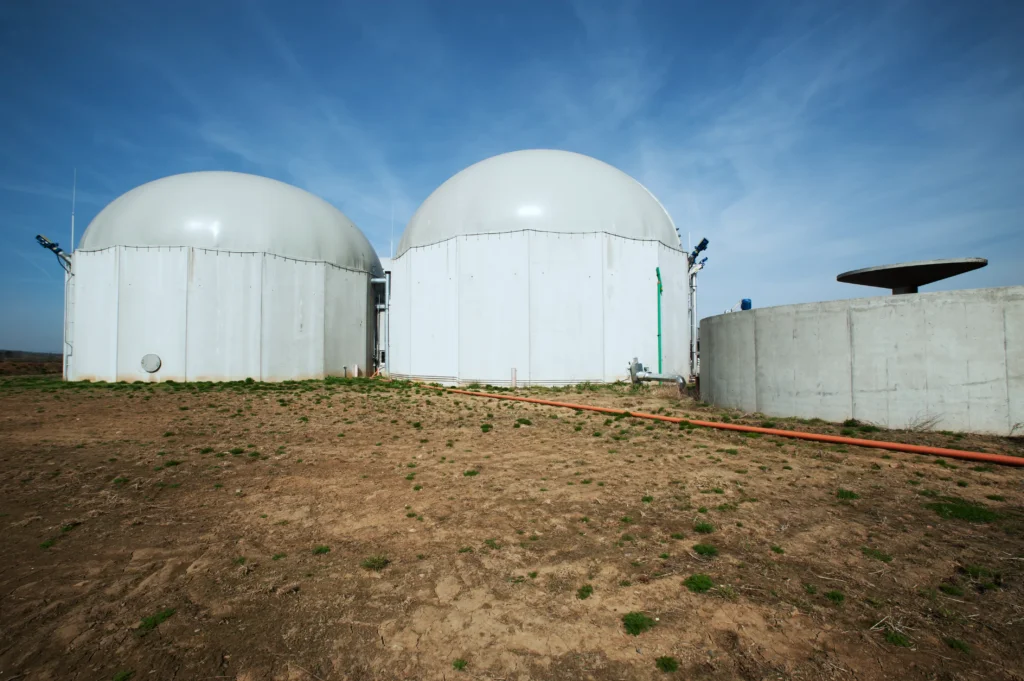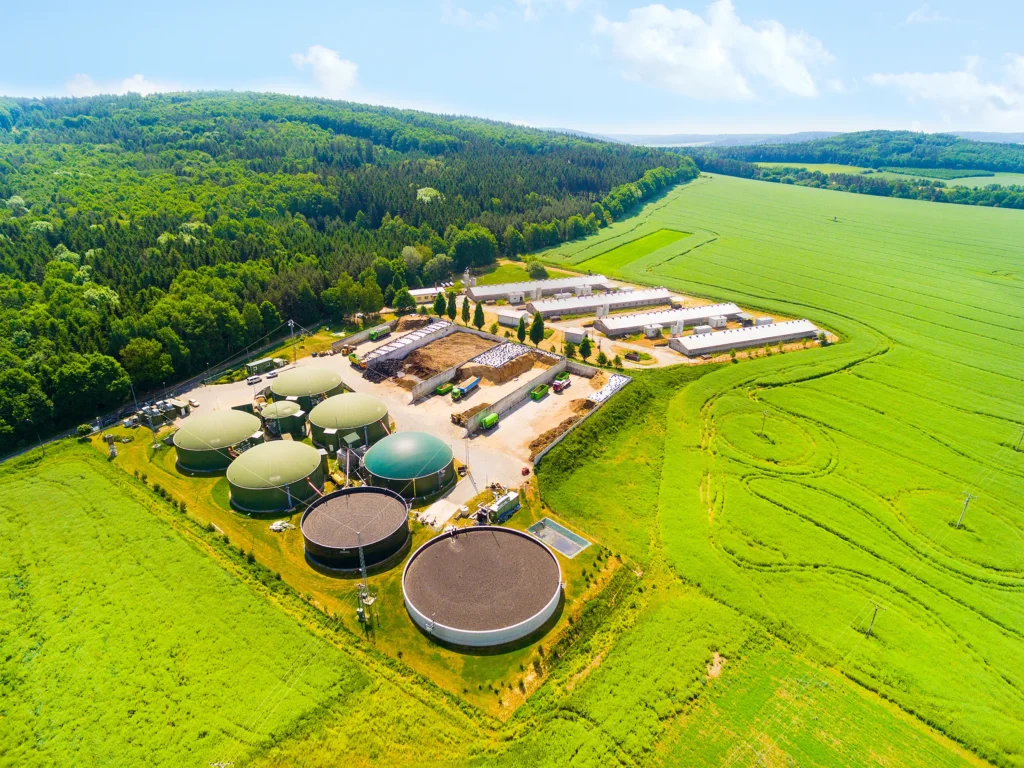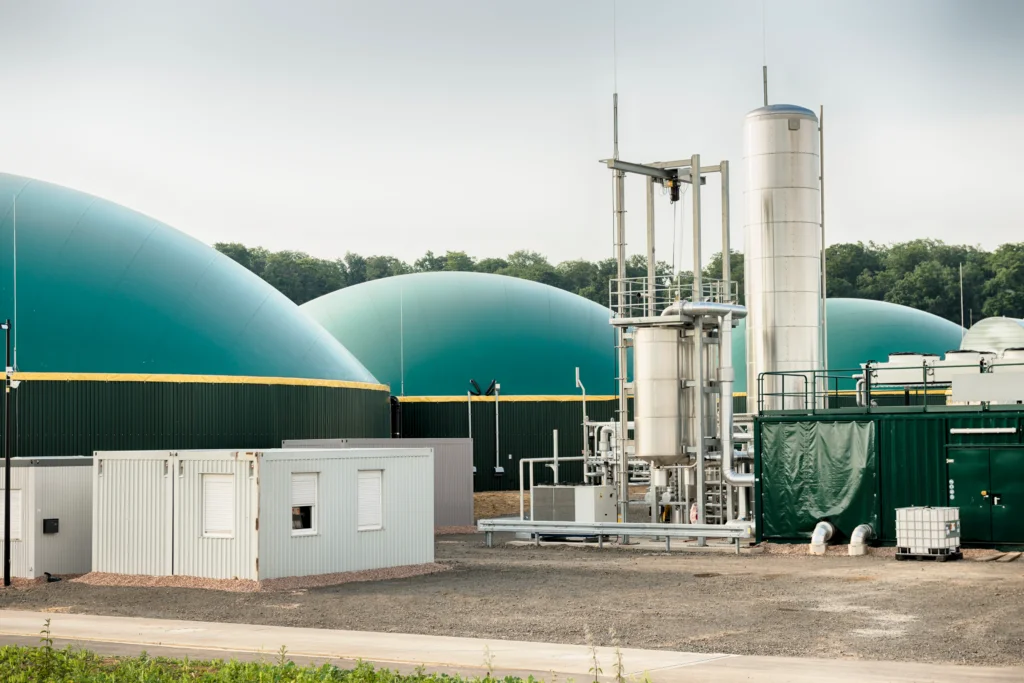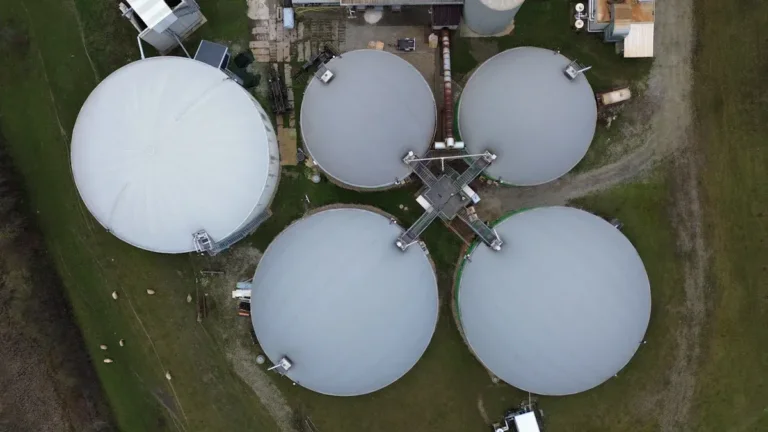Carvão ativado para biogás
.webp)
Buy Biogas Activated Carbon
Desafios do sector
Material Performance Limitations
- Adsorption Selectivity: Activated carbon exhibits non-selective adsorption, capturing CO₂ and moisture alongside target contaminants like H₂S or siloxanes, reducing effective capacity for primary pollutants.
- Pore Clogging: Particulates, oil mist, or tars in biogas physically block micropores ("pore poisoning"), diminishing surface area and adsorption efficiency over time.
Sensitivity to Operational Conditions
- Humidity Interference: High moisture levels (>70% RH) compete with contaminants for adsorption sites, significantly lowering H₂S removal performance, especially in humid climates.
- Temperature Instability: Elevated biogas temperatures (e.g., >40°C) reduce adsorption capacity and may trigger desorption of captured pollutants.
System Integration and Maintenance
- Saturation Management: Finite adsorption capacity necessitates frequent carbon replacement or regeneration, risking pollutant "breakthrough" if not timely addressed.
- Regeneration Complexity: Thermal/chemical regeneration is energy-intensive and may incompletely restore capacity or release trapped pollutants, requiring secondary treatment.
tipos relacionados de carvão ativado
-r8fslg51nt6wgjtvh6yldxb1gtkgm3lpe0oq1akgog.webp)
- Valor de iodo: 600-1200
- Tamanho da malha: 1×4/4×8/8×16/8×30/12×40/20×40/20×50/30×60/40×70 (Mais tamanho a pedido)
- Densidade aparente: 400-700
-r8fsli0q1h9h3rr567ruiwtynlb71ht629zozuhoc0.webp)
- Valor de iodo: 500-1300
- Tamanho da malha:0.9-1mm/1.5-2mm/3-4mm/6mm/8mm(Mais tamanho a pedido)
- Densidade aparente: 450-600
-r8fslbfupn0gui0p8mxgjghqhw7mjm31pdfamwrfjk.webp)
- Valor de iodo: 500-1300
- Dimensão da malha: 150/200/300/350 (outras dimensões a pedido)
- Densidade aparente: 450 - 550
-r8fsle9da54btbwls65c8xs4a1tq6pe8prdr2qn90w.webp)
- Valor de iodo: 400-800
- Tamanho da malha: 100×100×100mm/100×100×50mm (densidade celular personalizada a pedido)
- Densidade aparente: 350-450
- Diâmetro do furo: 1,5-8 mm

- Valor de iodo: 700-1200 mg/g
- Área de superfície: 700-1200 m²/g
- Densidade aparente: 320-550 kg/m³

- Valor de iodo: 700-1200 mg/g
- Área de superfície: 700-1200 m²/g
- Densidade aparente: 320-550 kg/m³

- Valor de iodo: 700-1200 mg/g
- Área de superfície: 700-1200 m²/g
- Densidade aparente: 300-650 kg/m³

- Valor de iodo: 700-1200 mg/g
- Área de superfície: 700-1200 m²/g
- Densidade aparente: 320-550 kg/m³

- Método de ativação: Ativação por vapor/gás a altas temperaturas
- Estrutura de poros: Microporosa dominada, distribuição uniforme dos poros
- Perfil ambiental: Sem químicos, baixo teor de cinzas
- Aplicações principais: Adsorção em fase gasosa, purificação de água potável

- Método de ativação: Ativação química (por exemplo, H₃PO₄/ZnCl₂) a temperaturas moderadas
- Estrutura de poros: Mesoporoso-rico, maior área de superfície
- Eficiência do processo: Tempo de ativação mais curto, rendimento 30-50% mais elevado
- Pós-tratamento: É necessária uma lavagem com ácido para remover os resíduos

- Funcionalização: Carregado com agentes activos (por exemplo, I₂/Ag/KOH)
- Adsorção direcionada: Captura melhorada de poluentes específicos (por exemplo, Hg⁰/H₂S/gases ácidos)
- Personalização: Quimicamente optimizado para contaminantes alvo
- Aplicações principais: Tratamento de gases industriais, proteção CBRN
Why You Need Our Activated Carbon

Enhanced Contaminant Selectivity:
Targeted adsorption for critical biogas impurities (H₂S, siloxanes) with minimal interference from CO₂ or moisture, maximizing effective capacity.

Advanced Material Engineering:
(1) Chemically optimized impregnation ensures catalytic H₂S conversion to harmless byproducts without frequent media replacement.
(2) Tailored pore structure prevents premature clogging and maintains high siloxane/VOC adsorption efficiency.

Operational Resilience:
(1) Stable performance under high humidity (>70% RH) without pre-drying requirements.
(2) Consistent adsorption capacity across variable biogas temperatures and compositions.

Sustainable Lifecycle:
(1) Biomass-derived raw materials from renewable sources align with circular economy principles.
(2) Regenerable design extends service life and reduces waste generation.

System Integration Support:
(1) Predictable saturation indicators enable proactive maintenance scheduling. (2) Reduced backpressure in filter beds lowers energy consumption for gas transfer.
Processo e tecnologia
1. Hydrogen Sulfide (H₂S) Removal
Visão geral da solução
Chemically impregnated activated carbon catalytically converts toxic H₂S into harmless elemental sulfur through oxidation. Installed in fixed-bed filters where raw biogas flows through the carbon media.

Principais vantagens
- Prevents corrosion damage to engines and pipelines.
- Maintains effectiveness in humid biogas environments.
- Eliminates toxic gas emissions during energy generation.
- Requires no chemical additives during operation.
2. Siloxane Removal
Visão geral da solução
High-surface-area activated carbon physically adsorbs siloxane compounds through its microporous structure. Implemented in adsorption towers upstream of combustion equipment.

Principais vantagens
- Prevents abrasive silica deposits in engines.
- Extends maintenance intervals for generation equipment.
- Maintains consistent energy output quality.
- Handles variable biogas composition effectively.
3. Volatile Organic Compounds (VOCs) and Odor Control
Visão geral da solução
Activated carbon traps diverse organic compounds and odor-causing substances via physical adsorption. Used in final polishing stages before biogas utilization.

Principais vantagens
- Removes hazardous air pollutants.
- Eliminates nuisance odors from biogas facilities.
- Improves environmental compliance.
- Enhances community acceptance of biogas projects.
4. Carbon Dioxide (CO₂) Capture for Biogas Upgrading
Visão geral da solução
Specially engineered activated carbon with tuned pore structures selectively adsorbs CO₂ from biogas streams. Deployed in pressure swing adsorption systems for methane enrichment.

Principais vantagens
- Produces pipeline-quality biomethane.
- Utilizes sustainable biomass-derived carbon materials.
- Enables grid injection of purified biogas.
- Supports circular economy through waste valorization.

